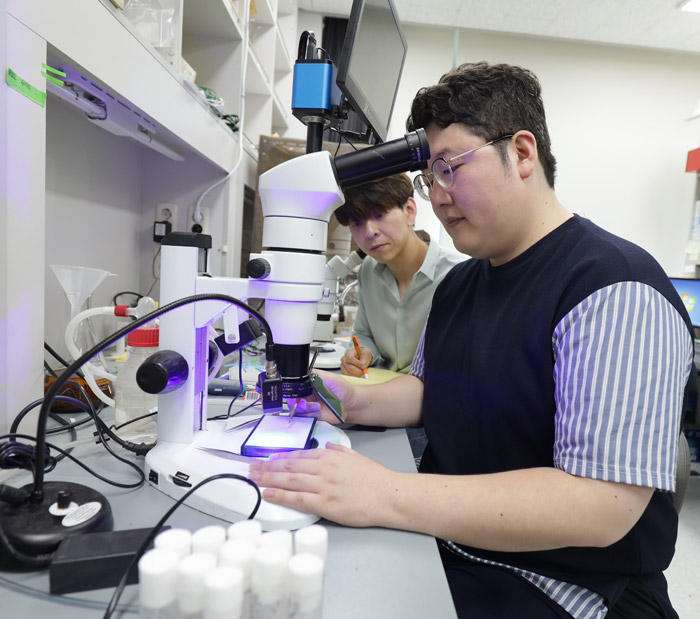Research Stories
Discovering new biological meaning of detecting nucleophilicity
Predicted the phototoxin of a compound by revealing the existance of nucleophilicity
Medicine
Prof.
KANG, KYEONG JIN
Researcher DU EUN JO
Photoreactive chemicals promote photo-injury and aging of the skin by generating radicals and ROS upon sunlight exposure. Vitamin B2, riboflavin, is a well-characterized phototoxin, tightly controlled to be present in the blood at low concentrations through kidney excretion, suggesting that organisms may have evolved to evade the phototoxic effect of essential nutrients. However, the molecular mechanism by which organisms sense phototoxins is unknown. In the submitted manuscript, we identified the sensory mechanism in insects, simultaneously revealing a cryptic property shared by its sensory ligands, phototoxins. Our results indicate that pigment molecules need to be nucleophilic to exert radical-generating (type-I) phototoxicity. To our knowledge, theories or experimental evidence associating nucleophilicity with phototoxicity are unprecedented. Nevertheless, this makes sense in that nucleophilic chemicals are inclined to donate electrons. When photo-excited electrons easily leave pigment molecules due to high nucleophilicity, free radicals can be readily produced from the pigment. We previously showed that nucleophile sensitivity of TRPA1(A) is critical for sensitively sensing free radicals arising from UV illumination (Du et al 2016 eLife). The submitted study together with the previous work indicates that nucleophile sensing ability of TRPA1(A) underlies detection of both cause (phototoxins) and effect (radicals) of phototoxicity as the sensory nexus for photoprotection, establishing nucleophilicity as a fundamental theme of photoreactivity.
In addition to the frontier orbital (HOMO-LUMO) energy gap and other photochemical parameters fallibly predicting phototoxins, our study may provide a new strategy to appraise the intrinsic photoreactivity of chemical compounds, which is a concern/interest to researchers developing new drugs for human diseases. While mostly useful to select against type-I phototoxicity, our findings can be implemented to positively identify robust photosensitizers for photodynamic therapy of diseases such as cancer. On the other hand, there have been anecdotes in which oral intake of vitamin Bs repels mosquitoes, while ingestion-based tests discredited them. Our study, examining Anopheles gambiae TRPA1 expressed in frog oocytes, implies that application on clothes rather than ingestion of riboflavin helps avoid mosquito bites that transmit fatal illnesses.

